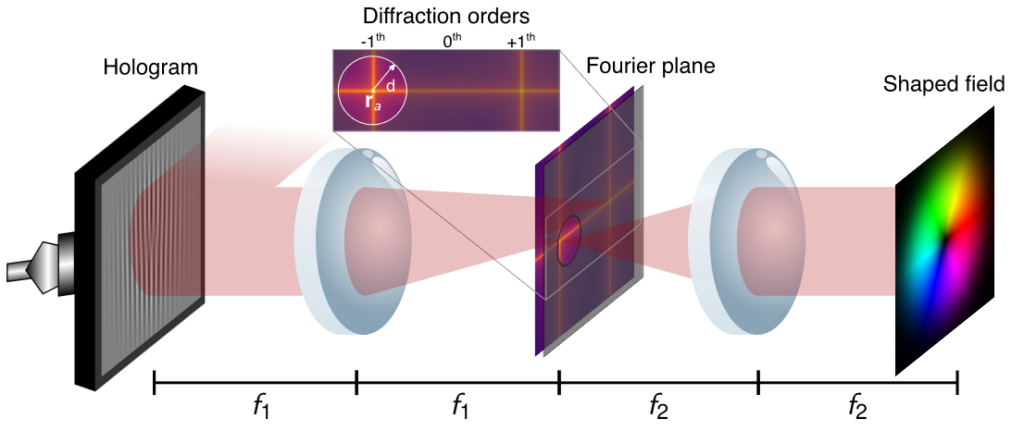Binary holograms for shaping light with digital micromirror devices
Binary holograms for shaping light with digital micromirror devices
R. Gutiérrez-Cuevas, S. M. Popoff
J. Phys. Photonics – to be published (2024)
arXiv:2311.16685
Digital micromirror devices are a popular type of spatial light modulators for wavefront shaping applications. While they offer several advantages when compared to liquid crystal modulators, such as polarization insensitivity and rapid-switching, they only provide a binary amplitude modulation. Despite this restriction, it is possible to use binary holograms to modulate both the amplitude and phase of the incoming light, thus allowing the creation of complex light fields. Here, a didactic exploration of various types of binary holograms is presented. A particular emphasis is placed on the fact that the finite number of pixels coupled with the binary modulation limits the number of complex values that can be encoded into the holograms. This entails an inevitable trade-off between the number of complex values that can be modulated with the hologram and the number of independent degrees of freedom available to shape light, both of which impact the quality of the shaped field. Nonetheless, it is shown that by appropriately choosing the type of hologram and its parameters, it is possible to find a suitable compromise that allows shaping a wide range of complex fields with high accuracy. In particular, it is shown that choosing the appropriate alignment between the hologram and the micromirror array allows for maximizing the number of complex values. Likewise, the implications of the type of hologram and its parameters on the diffraction efficiency are also considered.

plane wave illuminates an amplitude hologram. The diffracted light is then Fourier transformed by a lens. At the Fourier plane, the various diffraction orders are spatially separated and the one containing the information about the target field can be filtered by placing a small aperture. Finally, the filtered diffraction order is Fourier transformed in order to create the desired output shaped field.
